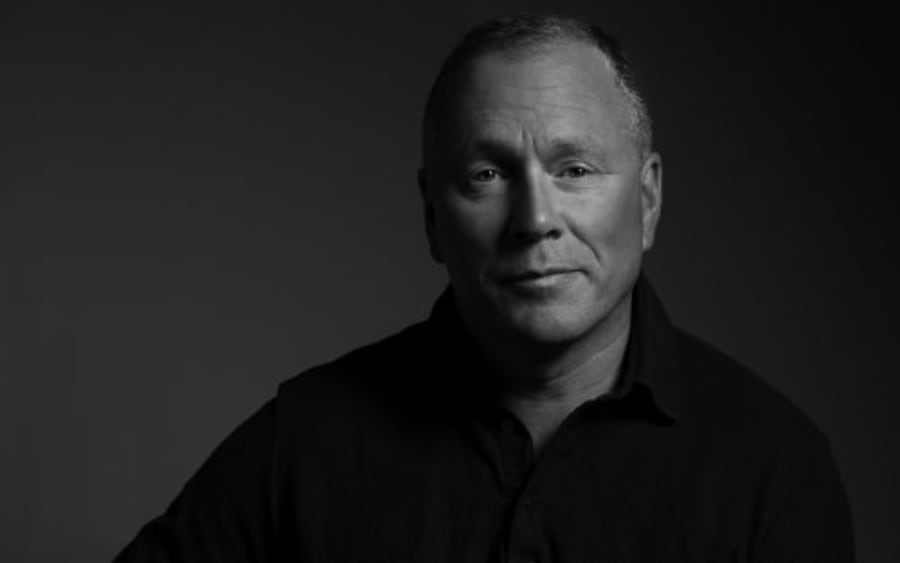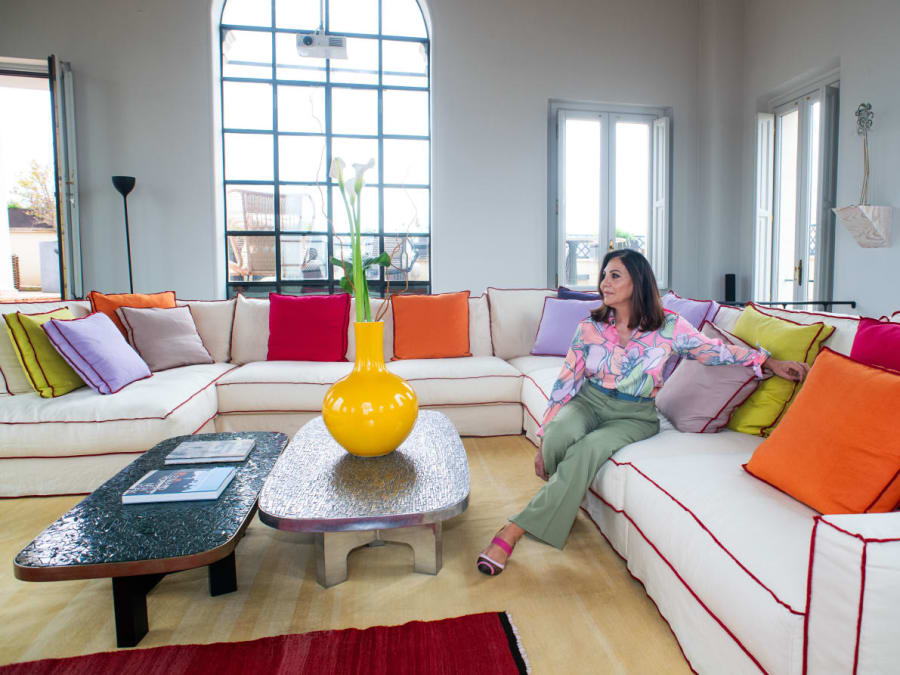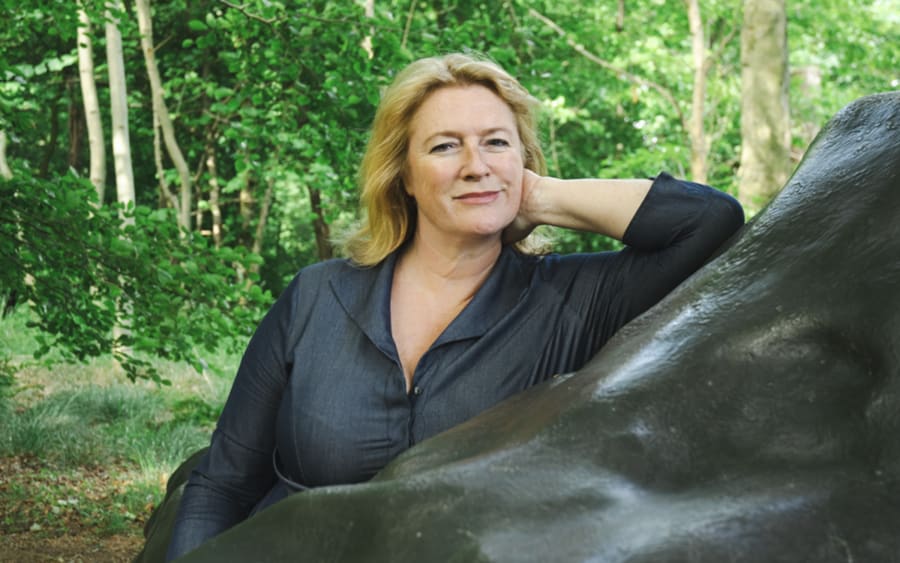‘My family collected classical art and antiques, and I believe the first modern painting I ever saw was by an Armenian Lebanese painter called Paul Guiragossian, at my uncle’s house. I was only introduced to contemporary art when I met my husband in the early 1990s. I might have been a little skeptical at first, but I quickly became curious and eager to know more. In 2004 we moved to London, where the scope and caliber of contemporary art was larger than what we had experienced in Lebanon. The Young British Artists were everywhere at the time, and everyone was buying Tracey Emin, Damien Hirst, Sarah Lucas, etc. It truly was the golden era, and we were very lucky to get to be a part of it.
‘The first piece we acquired was a sculpture by Antony Gormley, and we later purchased a neon work by Emin. At first we began spontaneously, but then the collection developed quickly and we felt that we needed some help and guidance. We were lucky to meet the right person at the right time. Her name is Prue O’Day. She came to our house, looked at what we had been collecting, and carefully listened to what we had in mind. She immediately understood where we were coming from and devised the right strategy for us going forward.
‘Prue insisted we follow three main guidelines – “Less is more,” “Focus, focus, focus,” and “Work within a budget.” Through her contacts, she gave us access to very high-quality and special works. More importantly, she taught us how to experience art as opposed to simply look at it. I understand that the following may sound like a cliché, but it really is all about following your heart, your instincts, and buying that piece that resonates with you. I think I only started to understand what collecting was about when I met Prue.
‘Our acquisition process quickly snowballed, and soon we were collecting art from every corner of the globe. My relationship with Middle Eastern art intensified, because it reminded me of all the things I missed and loved about my roots. I joined the Middle East and North Africa Acquisitions Committee [MENAAC] at Tate – I started co-chairing the committee four years ago – to help build the museum’s Middle Eastern art collection.
‘My husband and I collect very differently. He likes trauma-inflicted figures and difficult works. I come from a different school of thought – I take my time to think about the work, to learn the story behind it, and to understand how it fits within the artist’s oeuvre and the collection as a whole. I’m also attracted to works that are somehow more conceptual and less figurative. Our collection isn’t limited to any geographical areas, and almost two-thirds of the artists are women. The thread that links most of the works in our collection is the human condition – our existence. And, in 2007, we named the collection ISelf, as in “I” and “self.”
‘Philosophy, and especially existentialism, have always fascinated me, and I studied them in depth at school. So one can only imagine my joy when I discovered that a lot of works in our collection reflected that passion of mine. The ISelf Collection is home to a lot of figurative works that speak of trauma, violence, death, tragedy, and illness, by artists such as Pawel Althamer, Berlinde De Bruyckere, Paul McCarthy, and Jenny Saville. It also includes more poetic works that allude to love, sex, creation, birth, and motherhood, as well as domesticity, the home, and migration – Etel Adnan, Louise Bourgeois, Subodh Gupta, Mona Hatoum, Yayoi Kusama, Linder, Cindy Sherman, Cathy Wilkes, Raed Yassin, Akram Zaatari …
‘In 2017, Iwona Blazwick offered us a truly unique opportunity when she invited us to show ISelf at the Whitechapel Gallery. The show’s curators, Emily Butler and Lydia Yee, studied the entire collection before making their selection. Their exhibition eventually came in four chapters that lasted for over a year and attracted about 350,000 visitors. It was an incredibly humbling experience. An art collection is an emotional extension of your being, and sharing it with the public wasn’t easy. I can never forget the moment when the exhibition first opened to the public. The works looked quite different in the gallery’s larger space, removed from their domestic setting. The show received great media coverage and it became a pivotal moment for the ISelf Collection. As challenging as it was, I can’t think of a more rewarding experience than being able to share what you love with a wider audience.
‘Since then I’ve been thinking extensively about the future of ISelf. After witnessing how the public reacted to the works at the Whitechapel, I had the idea of creating a space dedicated to art and education, where sensory-impaired audiences – primarily children and young people – would be allowed to experience art not only visually but with all their senses, at zero cost. The foundation will offer courses and workshops and develop close collaborations with artists and various professionals in the field.’
Florence Derieux is an art historian and curator. She is the founder of FDA, an independent curatorial agency.
Caption for the full-bleed image: Portrait of Maria Sukkar by Sueraya Shaheen.Published on August 19, 2024.


